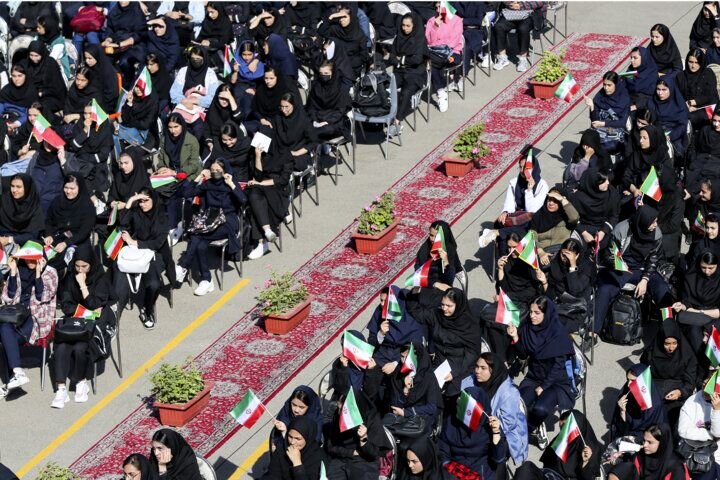Key educational achievements of Islamic Revolution

TEHRAN –The growth of literacy rate, especially among women, and per capita educational space are among the most important achievements of the country after the 1979 Islamic Revolution.
The Islamic Revolution was a cultural revolution based on the slogans of independence, freedom, and rejection of domination by hegemonic powers. The current academic achievements can be observed specifically in public education and the eradication of illiteracy.
The extensive efforts of educational authorities over the past four decades have realized the goal of public education and expansion of educational spaces thanks to which Iran has been placed among the top five countries in the international Olympiads.
The Constitution has highlighted free education for everyone at every level. As per the Constitution, the government is obliged to provide free education for all up to the end of secondary school and to expand free higher education to attain self-sufficiency for the country.
50% increase in the literacy rate
Statistics show that before the victory of the Islamic Revolution, the literacy rate of people aged 10 to 49 was 47 percent, which means 53 percent of the people were illiterate.
One year after the Islamic Revolution and due to the importance and necessity of literacy, Imam Khomeini ordered the establishment of the Literacy Movement Organization to eliminate illiteracy in the country.
Promoting cultural independence, and educational justice, were among the most important goals in the formation of the literacy movement.
Now, some 16.5 million students are studying in schools across the country to play key roles in the country in the not-too-distant future.
The literacy rate of people aged 10-49 has reached 98 percent and the educational coverage of primary school students has reached 99 percent.
In the last 45 years, the growth of literacy was about 18 percent in the world, while in the same period, this figure was 50 percent in Iran. In other words, the literacy growth rate in Iran has been 2.5 times the world average.
Also, the results of the census conducted between 1976 and 2016 show that the gender gap in literacy rate decreased from 23.4 percent in 1976 to about 6 percent in 2016.
Also, based on censuses, the gap between literacy in urban and rural areas decreased from 34.9 percent in 1976 to 11 percent in 2016. The literacy index in deprived areas of the country increased from 65.4 percent to 90.8 percent.
220% increase in girls’ access to education
Access to education is another step towards the realization of educational justice. The girls’ access to education has improved by 220 percent compared to the years before the Revolution.
The scientific progress of Iranian women in the years after the Islamic Revolution has been very impressive. Some 135 out of 938 Iranian researchers who have been recognized among the world's top one percent most-cited researchers in 2023 are female scholars.
Despite some difficulties, the Iranian female population has been provided with the opportunity to study at universities in various fields so that educated women are seen as one of the most important social assets of the country today.
In the pre-Revolution era, most of the female pupils were keen on studying art and medical sciences at universities, but nowadays, they study in all fields including engineering, mathematics, economy, and agriculture.
As of 2006, women accounted for over half of university students in Iran and 70% of science and engineering students. In 2012, according to UNESCO data, over 2 million out of 4 million students in tertiary education in Iran were females, thus marking the fifth largest female enrollment after China, India, the US, and Brazil. In engineering fields, Iranian female enrollment ranked first in the world and in science fields second, after the US.
Iranian women have been able to achieve countless successes in various fields. It is difficult to name all these women. There are also many successful Iranian women all over the world who are famous in many fields of science and technology. A number of these women have achieved the highest honors in certain fields.
Per capita educational space
With the growth of literacy and the increase in the number of students, the need for a safe and comfortable learning environment has also increased. Schools with facilities such as large halls, sports grounds, culture, and art centers in addition to classrooms.
In the last few years, about 1000 new schools have been opened. Currently, the educational space per capita is Iran is about 5.2 square meters while before the Islamic Revolution, the space was measured at 1.5 square meters.
Literacy movement
The implementation of the general mobilization plan for literacy in 1990 increased the literacy rate to 97 percent in 2023.
In 1990, more than 4.1 million illiterate people were educated within a decade, and in 1996, the literacy rate in Iran reached 79.5 percent (an 18 percent increase).
In 2015, 2016, and 2017, the figures reached 84.6 percent, 84.8 percent, and 87.6 percent respectively.
In 2021, the figure was 90.5 percent (in the age group of six and older).
Meanwhile, the literacy movement did not fail to consider foreign nationals, especially Afghans, as some one million refugees have become literate in the past years.
Over the past years, the Literacy Movement Organization has implemented projects that have been effective in blocking the causes of illiteracy and have been able to promote literacy in different age groups and strata, including foreigners, prisoners, soldiers, parents of illiterate students, employees, workers and women who are the heads of the household.
Despite all these efforts, some two percent of people have remained illiterate due to various reasons such as lack of learning ability.
As the new definition of "literacy" is no longer confined to reading and writing, the first mission of the literacy movement is not to overcome basic illiteracy.
Leave a Comment